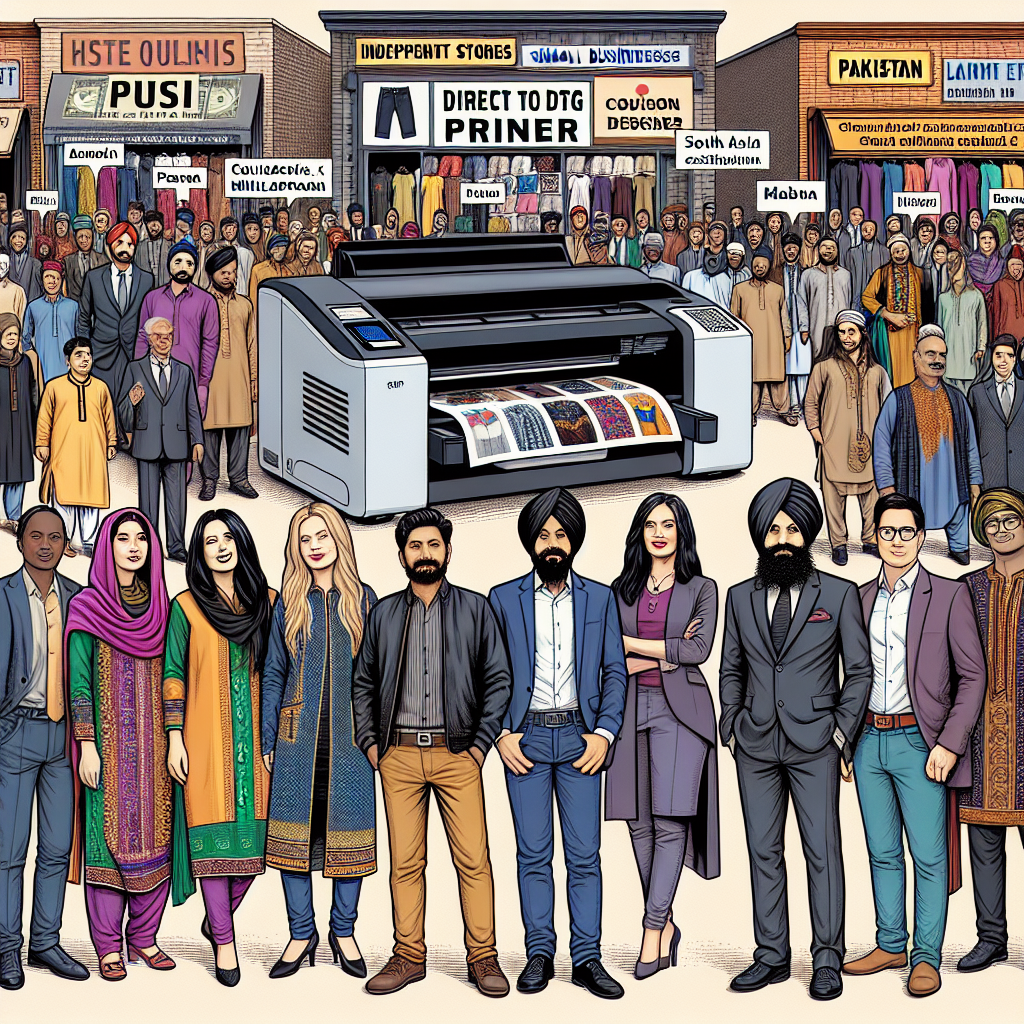

In the rapidly evolving world of textile printing, Direct-to-Garment (DTG) printing has emerged as a game-changer, offering businesses a cost-effective and versatile solution. In Pakistan, where the textile industry plays a significant role in the economy, the adoption of DTG printers has been transformative. This article explores how successful businesses in Pakistan are leveraging DTG printers, focusing on the impact of DTG printer prices on their operations and growth.
DTG printing is a method that allows for the direct application of ink onto fabric using specialized inkjet technology. This process is similar to printing on paper, but it is designed for textiles. The technology is particularly popular for its ability to produce high-quality, full-color prints on demand, making it ideal for custom apparel businesses.
The price of DTG printers in Pakistan varies based on the model, brand, and features. For many businesses, the initial investment in a DTG printer is a significant consideration. However, the long-term benefits often outweigh the upfront costs. Let's delve into how businesses are navigating these financial aspects.
In Pakistan, the price of a DTG printer can range from PKR 500,000 to over PKR 2,000,000. This range allows businesses of different sizes to find a suitable option. The key is to balance the initial investment with the expected return on investment (ROI).
Many businesses opt for financing options to manage the cost of purchasing a DTG printer. Leasing and installment plans are popular choices, enabling companies to spread the cost over time while benefiting from the technology immediately.
To understand the real-world impact of DTG printers, let's examine some successful businesses in Pakistan that have integrated this technology into their operations.
A Lahore-based startup specializing in custom t-shirts leveraged DTG printing to offer personalized designs. By investing in a mid-range DTG printer, the company was able to reduce production costs and offer competitive pricing. The flexibility of DTG printing allowed them to cater to small orders, which was a significant market segment.
An established textile manufacturer in Karachi incorporated DTG printers to diversify their product offerings. By doing so, they tapped into the growing demand for custom apparel. The initial investment in high-end DTG printers was substantial, but the company quickly recouped costs through increased sales and new business opportunities.
An online retailer based in Islamabad used DTG printing to expand their product line to include custom hoodies and sweatshirts. The ability to print on demand reduced inventory costs and allowed for a broader range of designs. The retailer reported a 30% increase in sales within the first year of adopting DTG technology.
DTG printing has not only helped businesses reduce costs but also spurred innovation. Companies are now able to experiment with new designs and products without the risk of high production costs. This flexibility has led to increased creativity and a more dynamic market presence.
For many businesses, the scalability offered by DTG printing is a significant advantage. As demand grows, companies can easily scale up production without the need for additional infrastructure. This scalability is particularly beneficial for small and medium-sized enterprises (SMEs) looking to expand their market reach.
In conclusion, the adoption of DTG printers in Pakistan has proven to be a strategic move for many businesses. The technology offers a cost-effective, flexible, and scalable solution for textile printing, enabling companies to meet the growing demand for custom apparel. By understanding the DTG printer price in Pakistan and exploring financing options, businesses can make informed decisions that align with their growth objectives.
For entrepreneurs and established companies alike, the key is to leverage the advantages of DTG printing to drive innovation and expand market presence. As the textile industry continues to evolve, those who embrace this technology will likely find themselves at the forefront of the market, reaping the benefits of increased efficiency and creativity.
Ultimately, the successful integration of DTG printers into business operations can lead to significant competitive advantages, making it a worthwhile investment for those looking to thrive in Pakistan's dynamic textile sector.